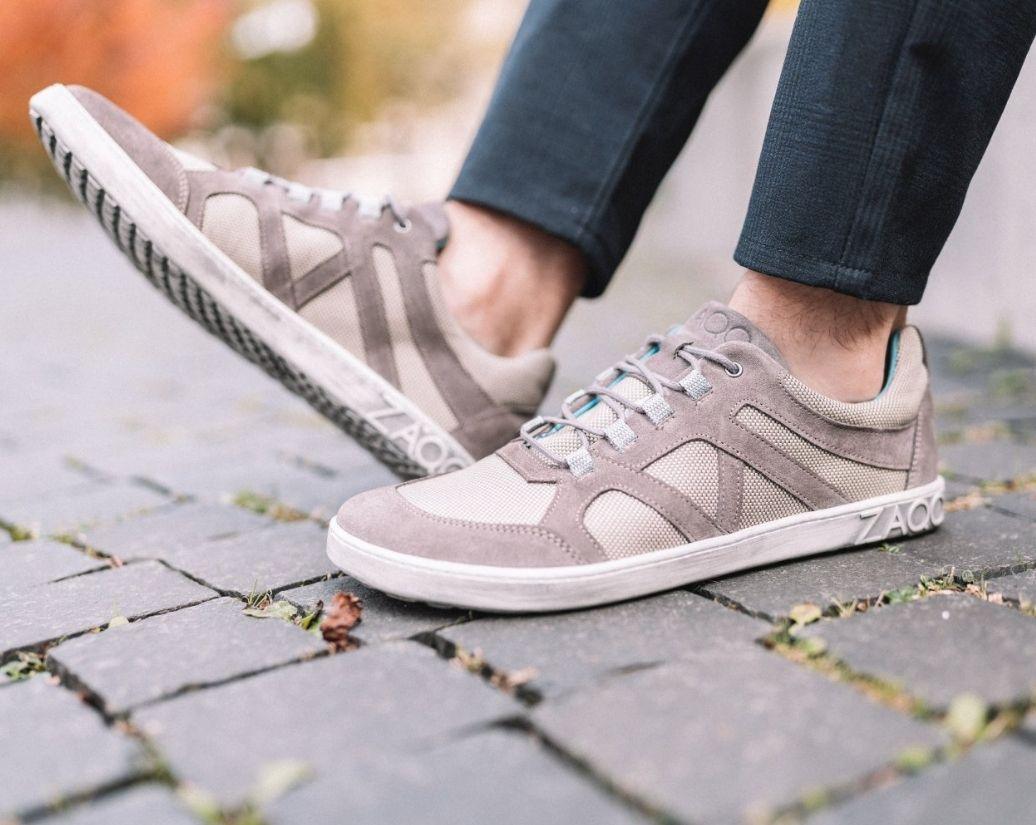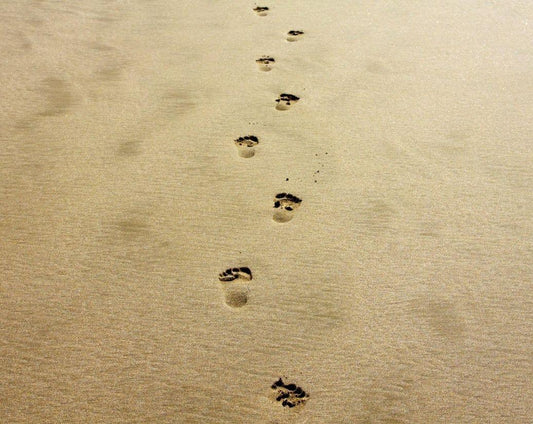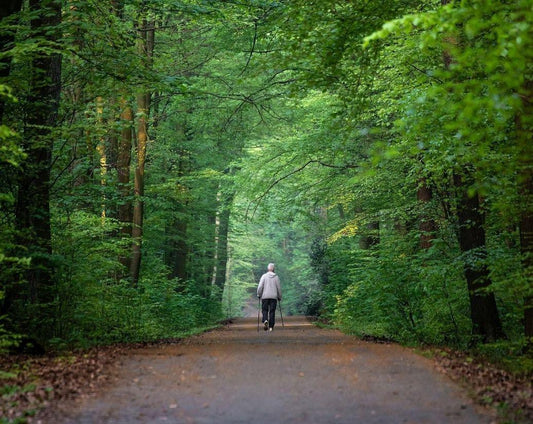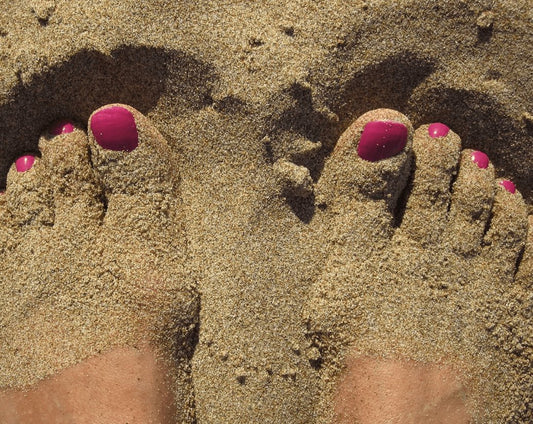Why walking barefoot and barefoot shoes are so healthy

We are born without shoes, can walk perfectly barefoot, and thus develop a natural and joint-friendly gait. However, our modern life is not designed for walking barefoot all day.

Why we no longer walk barefoot
Anyone who walks barefoot not only on the beach or on the grass but in all activities is looked at strangely and often labeled as a weirdo, dropout, or hippie. Walking barefoot is simply not socially acceptable. The ground we walk on is rarely natural. Instead, we predominantly walk on asphalt and therefore need to protect our feet with shoes from shards, sharp edges, or heated stones.
On hard asphalt, a sharp stone or stick can pierce our skin much more easily than on natural forest or meadow ground, which always gives a little. So we need sufficient protection for our feet!
Wearing barefoot shoes is the option closest to walking barefoot. Once you've experienced the pleasure of barefoot shoes, you certainly won't want to do without them. Wearing barefoot shoes has enormous advantages!

What changes by wearing barefoot shoes?
Just take off your running shoes and jog barefoot. You will quickly notice that you never land on your heels. Subconsciously, we know it will hurt! Our gait is designed to first land on the ball of the foot. That is exactly what we do automatically when we run without shoes – a kind of primal instinct that protects us from injuries.
Toddlers who are not given shoes when learning to walk do exactly that. They step on the ball of the foot first before rolling the foot to the heel. Unfortunately, this natural movement is unlearned by our modern shoes. We no longer land on the ball of the foot, but predominantly on the heel. This is further exacerbated when wearing heeled shoes. Many people literally stomp their heels into the ground.

In this unnatural gait for us humans, significantly fewer muscles are used. The steps can be made significantly longer when you place the foot on the heel first. Consequently, you have to take significantly fewer steps for the same distance compared to the natural ball-of-foot walking. Due to the shock-absorbing properties of modern shoes, the joints and spine can sometimes withstand the hard rolling over the heel quite well – but sometimes not! In younger years, most people do not have problems with this. However, as they age, many people suffer from joint pain.
Many do not know that these pains can be associated with the unnatural gait. This causes the loss of important support muscles that protect our joint apparatus as well as increased stress due to insufficient cushioning.


Back to Natural Walking with Barefoot Shoes
Barefoot shoes are often also referred to as minimal shoes. They have a very thin and, above all, flexible sole. They are intended to ensure that your foot uses all the muscles when running that are also used when walking barefoot. Unfortunately, many have lost exactly these muscles or never developed them in childhood due to wearing shoes. Therefore, one should get used to barefoot shoes slowly.
Give your foot and leg muscles time to develop. After the transition, you will surely feel changes in your body. Walking barefoot or correctly running in barefoot shoes protects our joints in the feet, ankles, knees, hips, and spine.
Our body has a natural shock absorption built in. If we return to natural walking, expensive high-tech shoes with sophisticated cushioning are absolutely unnecessary and even counterproductive! It is very important to take shorter steps to be able to land on the ball of the foot. If the steps are too long, this is no longer possible, and you inevitably land on the heels.

It is like any other routine you want to train yourself to do. You have to consistently stay on track and keep training the natural gait, preferably daily. Then you will eventually switch automatically and no longer have to consciously pay attention to walking correctly. The ball-of-foot walking will become your new routine.
You can best prepare your feet for barefoot shoes by actually walking barefoot as often as possible, preferably on a variety of surfaces. At first, a soft lawn or even a sandy beach is suitable. Once you get used to it, you can try new surfaces.

Suddenly more pain when wearing barefoot shoes
It can happen that you experience muscle and joint pain in the first few days. The first is a positive signal because you are building muscles that had atrophied due to unnatural walking. However, joint pain is a warning signal!
Many make the mistake of running in barefoot shoes the same way as before, landing hard on the heel. Since many barefoot shoes have no cushioning, nothing absorbs the impact, and the strain on the joints increases enormously.
Our ZAQQ barefoot shoes are perfect for the transition.
Our soles are super thin and flexible, yet they have a slight cushioning. This makes it easier for you to transition from heel to ball walking. It's perfectly normal that you will land on your heel repeatedly at first, after all, you've been doing it for years. It takes some time to unlearn this habit.
With our minimal cushioning, you still protect your joints in case the ball walking doesn't work at first. In our ZAQQ barefoot shoes, walking gains a whole new quality. You feel the ground and perceive your surroundings differently. You protect your joints and spine and optimally rebuild the muscles that our entire musculoskeletal system needs to stay agile and healthy.
Now there's no turning back, so browse through our range. We have the right barefoot shoe for you not only for sports and outdoor activities but also for business, going out, and all everyday activities.
Feel free, feel ZAQQ.










